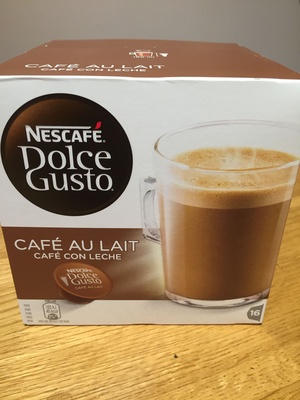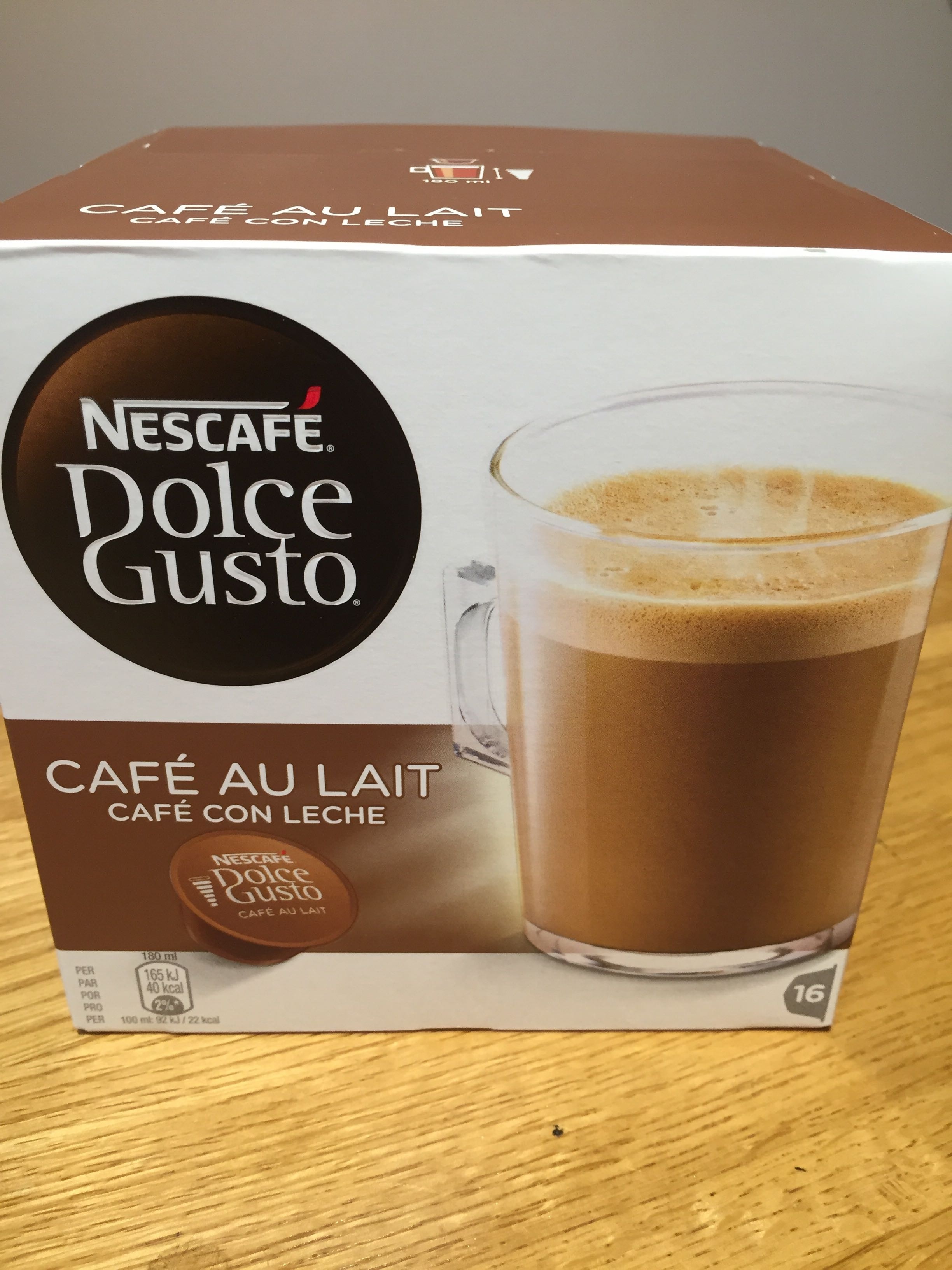Dolce Gusto Café au Lait - Nescafé - 160 g
This product page is not complete. You can help to complete it by editing it and adding more data from the photos we have, or by taking more photos using the app for Android or iPhone/iPad. Thank you!
×
Some of the data for this product has been provided directly by the manufacturer NESTLE FRANCE. - Customer service: Contact form 0 809 400 412 (service gratuit + prix de l'appel)
Côd bar: 7613033174667 (EAN / EAN-13)
Common name: Café au Lait
Quantity: 160 g
Packaging:
en:Bottle cap, en:Box, en:Capsule, en:Cardboard, en:Sleeve, en:Wine cork, en:Green dot
Brandiau: Nescafé
Categorïau: en:Plant-based foods and beverages, en:Beverages, en:Plant-based foods, en:Hot beverages, en:Coffees, en:Instant beverages, en:Non-alcoholic beverages, en:Unsweetened beverages, en:Capsules, en:Instant coffees, en:Coffee capsules, en:Dolce Gusto-compatible coffee capsules
Labels, certifications, awards:
EAC, en:Green Dot
Link to the product page on the official site of the producer: https://www.dolce-gusto.es/capsulas/cafe...
Stores: Magasins U, carrefour.fr, Mercadona
Countries where sold: Ffrainc, Sbaen, Y Swistir, Y Deyrnas Unedig
Matching with your preferences
Health
Cynhwysion
Food processing
Ychwanegion
Ingredients analysis
Nutrition
Environment
Carbon footprint
Packaging
Transportation
Other information
Preparation: 1 capsule = 1 tasse de 180 ml.
Conservation conditions: Conserver dans un endroit propre, sec et à température ambiante.
Customer service: Nestlé France, 34-40 rue Guynemer 92130 Issy-les-Moulineaux
Report a problem
Data sources
The manufacturer NESTLE FRANCE uses Equadis to automatically transmit data and photos for its products.
Product added on gan openfoodfacts-contributors
Last edit of product page on gan thaialagata.
Golygwyd y tudalen cynnyrch hefyd gan aleene, alia, arnau, corrigo, daniel88, date-limite-app, driveoff, ecoscore-impact-estimator, feat, foodless, foodrepo, foodvisor, inf, kiliweb, magasins-u, maxinc, musarana, openfood-ch-import, org-nestle-france, packbot, quentinbrd, rick77, roboto-app, scanbot, tacinte, tacite, teolemon, torpedin, vanished, yuka.R29JR0dmd0htOU1ScXZFbXh3TDd3dHhWM0tLRFoyZTNOYk1wSVE9PQ, yuka.UWE0eERMbzcvTll2dy8wOStSSG4xczVVMTVPUVltNnhlckErSVE9PQ, yuka.ZEtjREhJSVBwdHd6aThZYTBEMy94OTFld2JHblpqT2NlOEFESVE9PQ, zuri.




